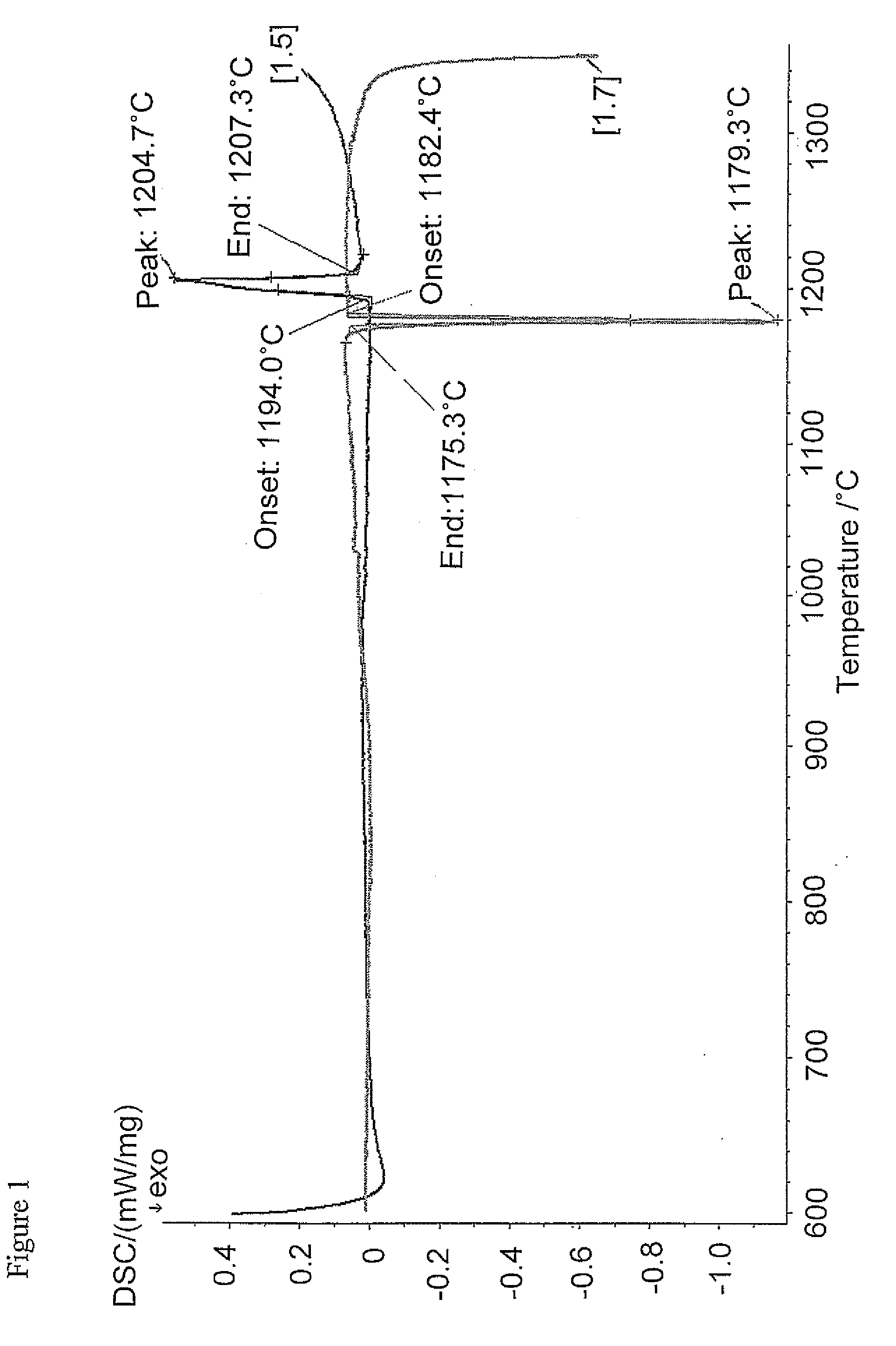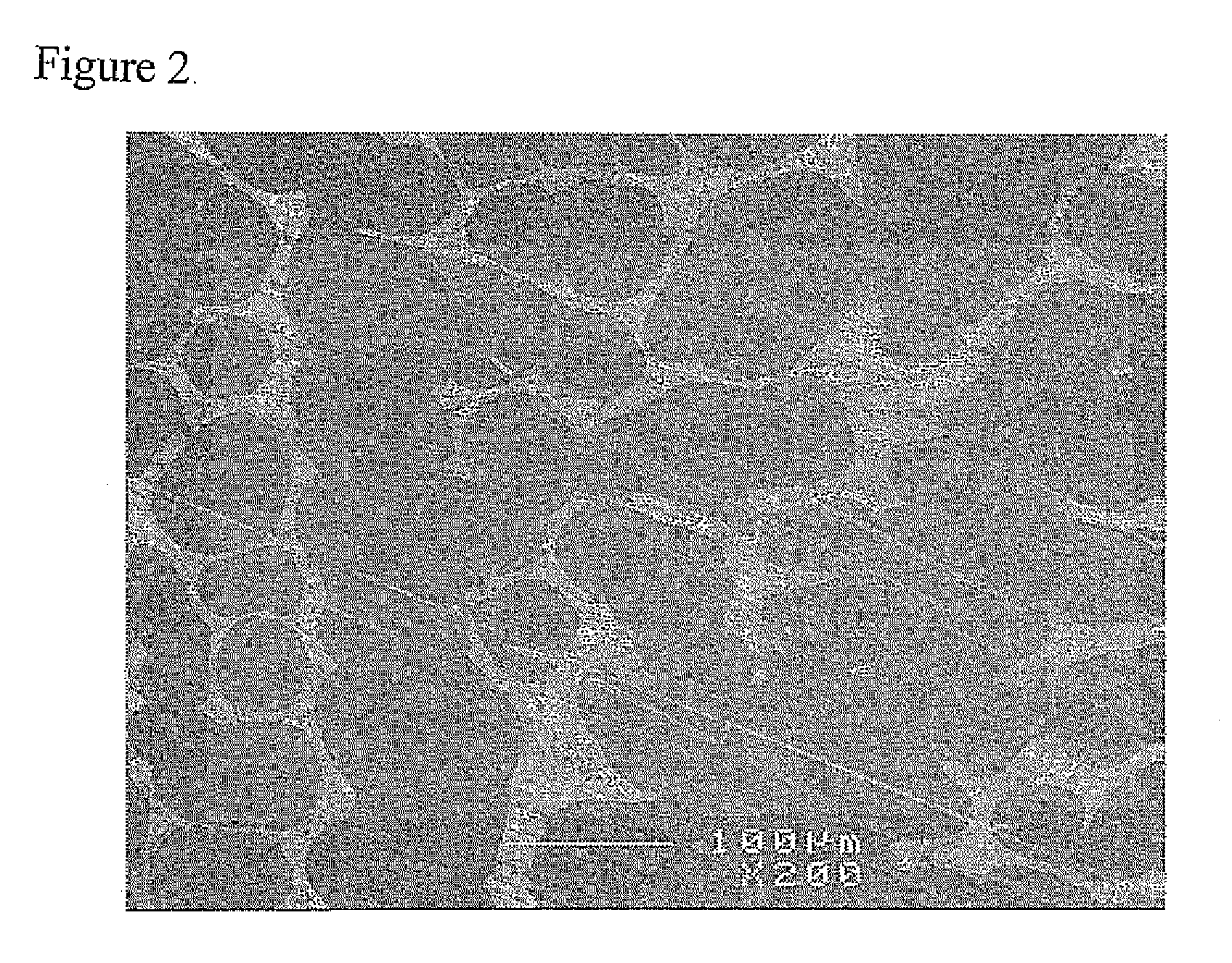Low-melting boron-free braze alloy compositions
a technology of boron-free braze and compositions, which is applied in the direction of welding/cutting media/materials, non-electric welding apparatus, and solvents. it can solve the problems of excessive cracking in the heat affected zone and fusion zone, distortion of articles, and reducing the ductility, fatigue life and corrosion resistance of joints/repaired areas. to achieve the effect of suppressing the melting temperature of braze alloys
- Summary
- Abstract
- Description
- Claims
- Application Information
AI Technical Summary
Benefits of technology
Problems solved by technology
Method used
Image
Examples
first embodiment
[0030]The braze alloy compositions disclosed and claimed herein have a wide range of solidus and liquidus temperatures that can be modified to accommodate different superalloy operating temperatures. Due to the complete removal of brittle borides from the braze joint, the mechanical properties and environmental resistances of the joint with the braze alloy compositions claimed are expected to improve. The braze alloy compositions claimed in this invention may be used, in accordance with a first embodiment, as single component in narrow gap operation.
[0031]In this first embodiment the composition will include the following range of constituents: 5-15% hafnium by weight, 5-25% cobalt by weight, 2-15% zirconium by weight, 4-20% chromium by weight and up to 10% titanium by weight. A typical example would preferably contain 9% hafnium by weight, 18% cobalt by weight, 9% zirconium by weight and 15% chromium by weight and 5% titanium by weight.
second embodiment
[0032]Alternatively in accordance with a second embodiment, various braze alloy compositions may be used in admixture with other high melting filler alloys to form wide gap braze joint. These braze alloy compositions claimed in this invention can be used to join or repair superalloy articles with complex shapes and varying gap size, such as in gas turbine components.
[0033]In this second embodiment the composition will include the following range of constituents: 5-15% hafnium by weight, 5-25% cobalt by weight, 2-15% zirconium by weight, 4-20% chromium by weight and up to 10% titanium by weight. A typical example would preferably contain 12% hafnium by weight, 15% cobalt by weight, 12% zirconium by weight, 10% chromium by weight and 5% titanium by weight
third embodiment
[0034]In accordance with this invention, the formulation of the braze alloy compositions is such that the braze joint can be formed to have identical compositions as the substrate superalloys by selecting matching filler alloys since all elements included in the braze alloy compositions are present in common superalloy systems.
[0035]In this third embodiment the composition will include the following range of constituents: 5-15% hafnium by weight, 5-25% cobalt by weight, 2-15% zirconium by weight, 4-20% chromium by weight and up to 10% titanium by weight A typical example would preferably contain 15% hafnium by weight, 20% cobalt by weight, 15% zirconium by weight and 4% chromium by weight.
[0036]In accordance with one exemplary embodiment of the invention, a nickel-based braze alloy composition comprising: 5-15% hafnium by weight, 4-15% chromium by weight, 5-25% cobalt by weight, 2-10% zirconium by weight, 0-10% titanium by weight, and 0-5% aluminum by weight.
[0037]In accordance with...
PUM
| Property | Measurement | Unit |
|---|---|---|
| Fraction | aaaaa | aaaaa |
| Fraction | aaaaa | aaaaa |
| Fraction | aaaaa | aaaaa |
Abstract
Description
Claims
Application Information
 Login to View More
Login to View More - R&D
- Intellectual Property
- Life Sciences
- Materials
- Tech Scout
- Unparalleled Data Quality
- Higher Quality Content
- 60% Fewer Hallucinations
Browse by: Latest US Patents, China's latest patents, Technical Efficacy Thesaurus, Application Domain, Technology Topic, Popular Technical Reports.
© 2025 PatSnap. All rights reserved.Legal|Privacy policy|Modern Slavery Act Transparency Statement|Sitemap|About US| Contact US: help@patsnap.com



